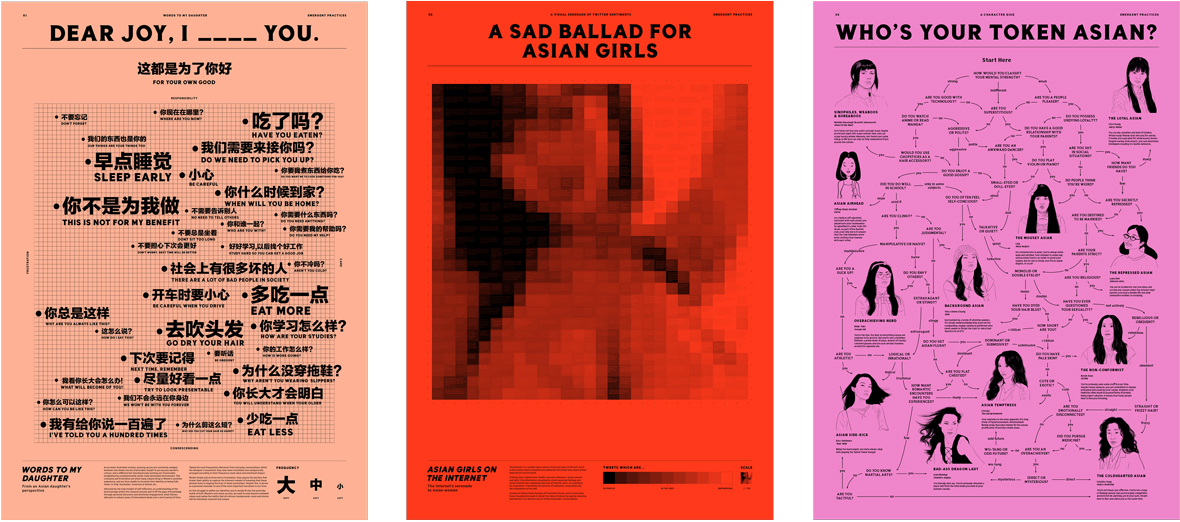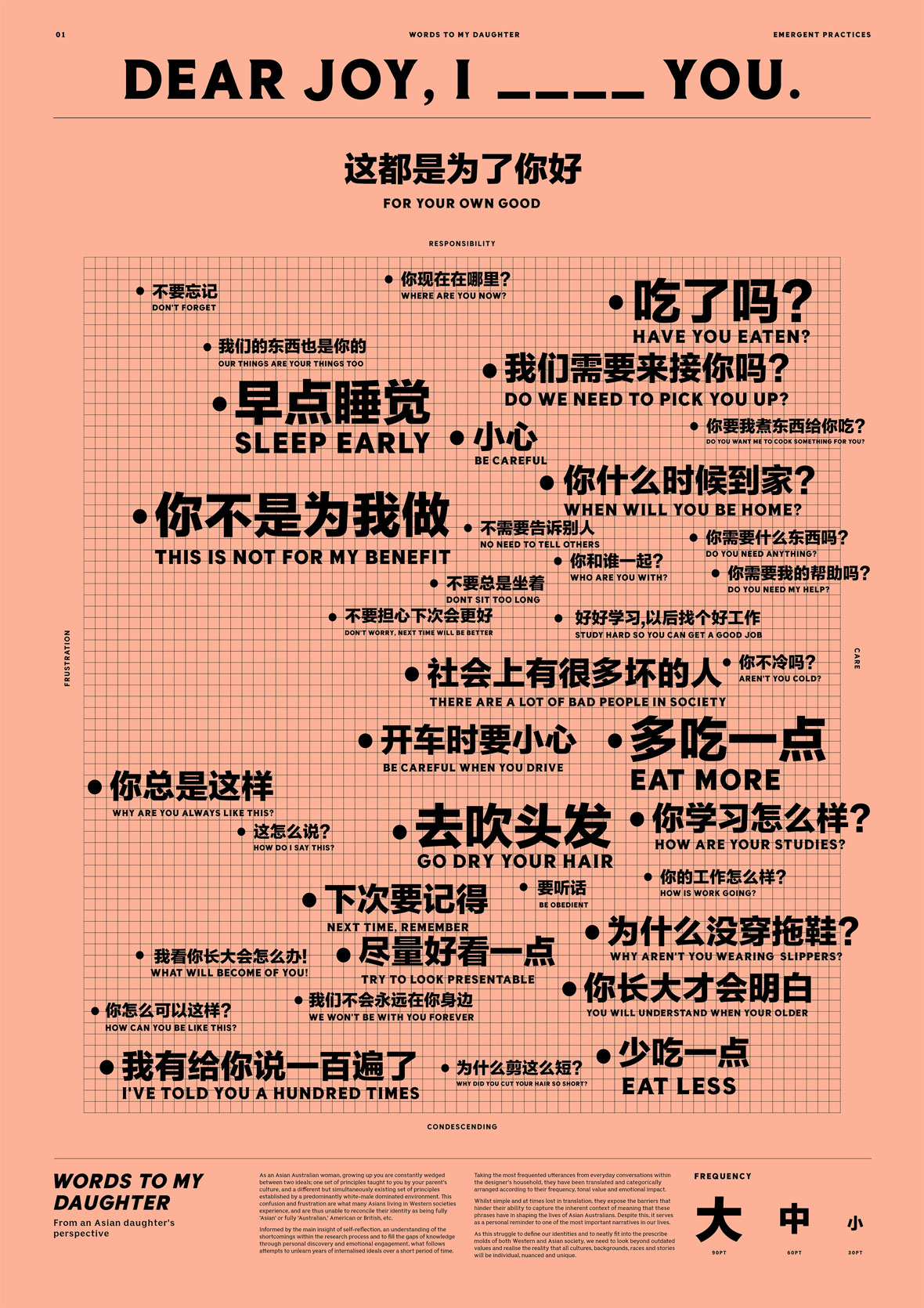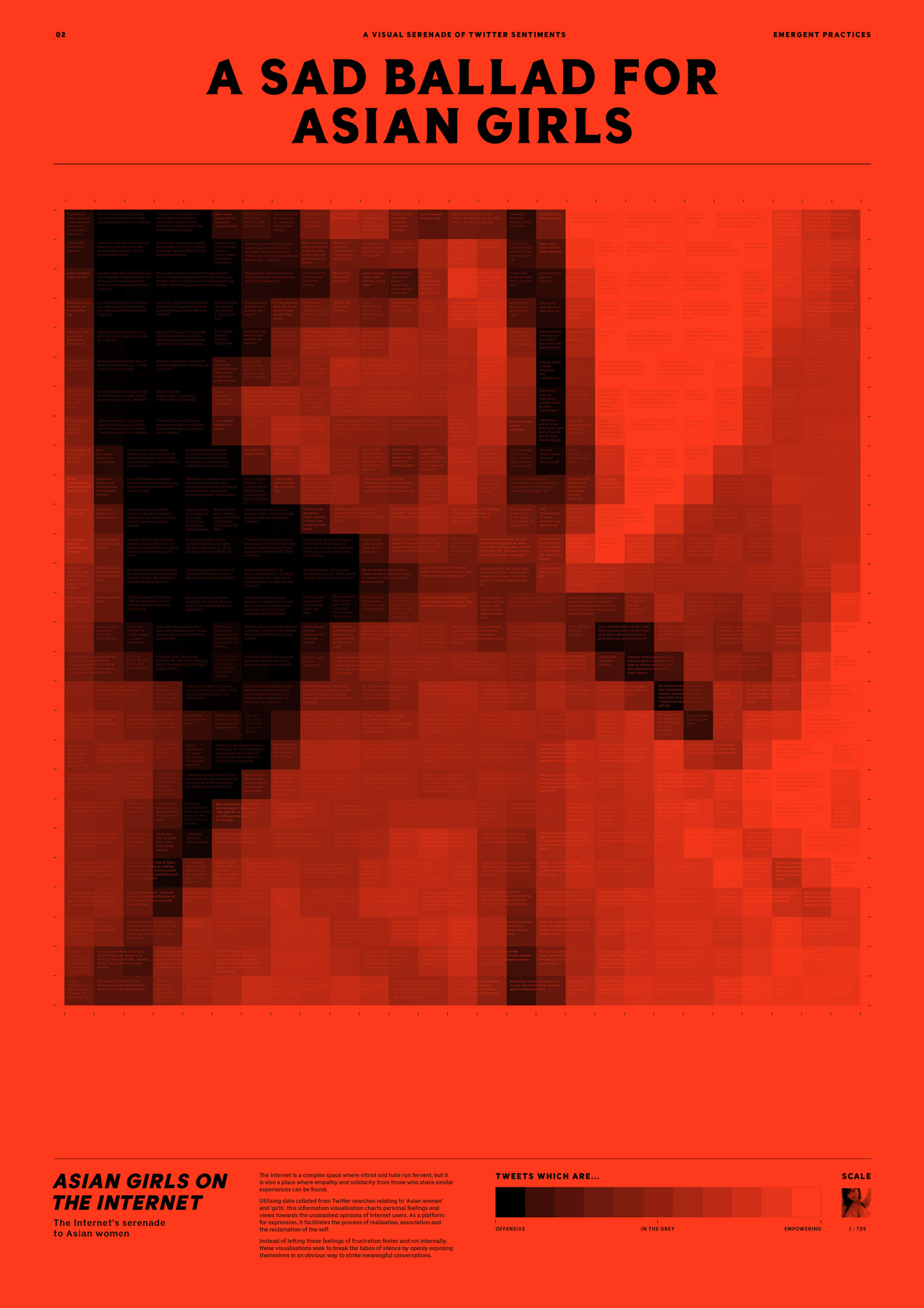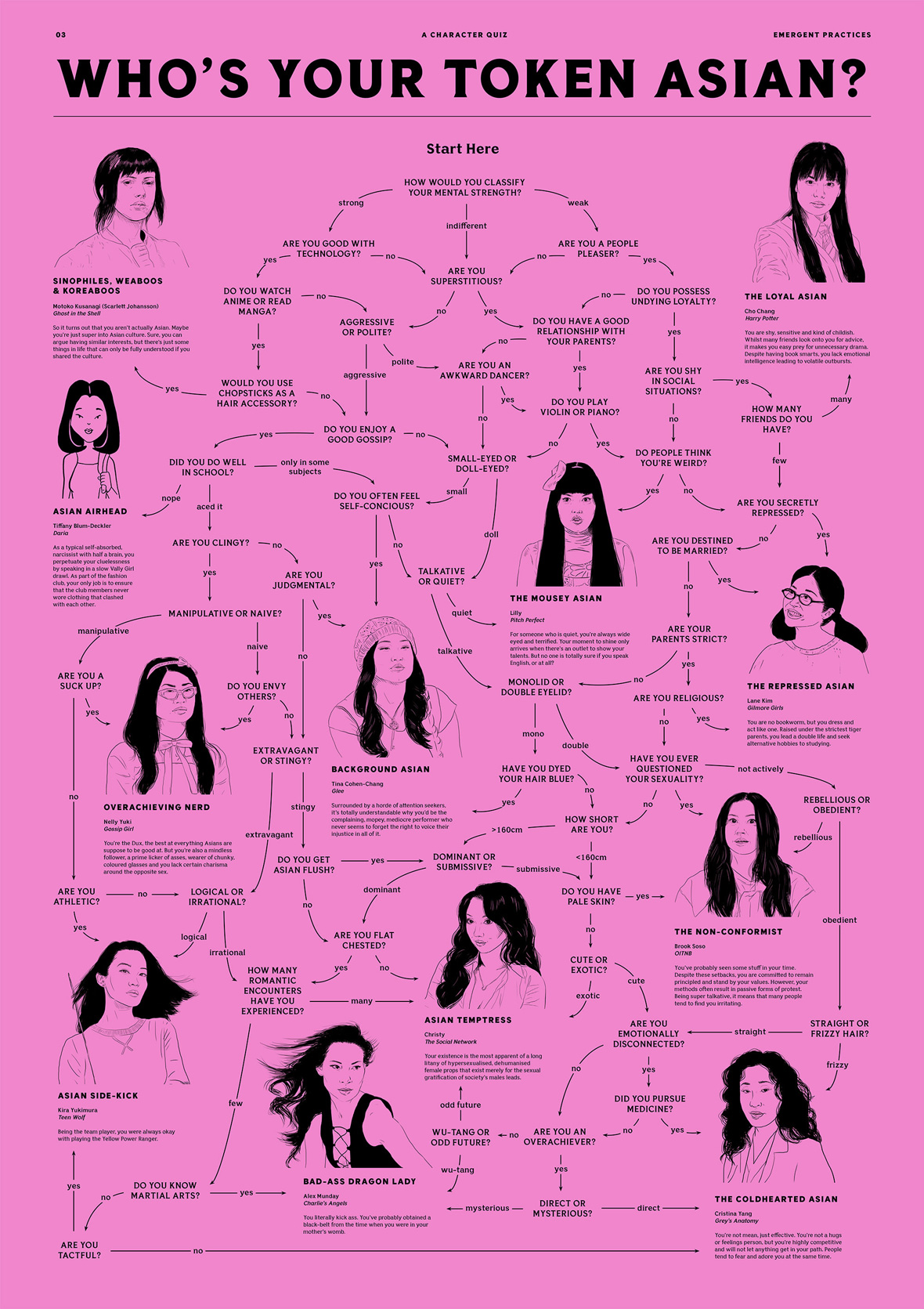
Sydney-based designer and illustrator Joy Li arrived in Australia at the age of one after her parents immigrated over from mainland China. Growing up in an Asian household while living amongst a Western society has meant that Li has spent her entire life “wedged between two ideals.” Her latest project, Living as an Asian Girl, aims to showcase the frustration that many Asian women living in Western societies experience. This three-part series takes inspiration from social media, pop culture and internet memes. Although the presentation is light-hearted and approachable, Li seeks to shed a truthful light on the “difficulty in reconciling with conflicting identities and its subsequent effect on our psychological well-being.”
Joy Li是一名设计师和插画家。一岁时,她随父母从中国移居澳大利亚。作为一个生活在西方社会,却在亚洲家庭里成长的女生,Li的人生注定会夹在“两种价值观之间”。因此,在她的最新的设计项目《Living as an Asian Girl》中,Li希望向观众传达许多亚洲女性在西方社会生活会遇到的挫败和苦恼。整个项目分为三部分,灵感来自社交媒体、流行文化和网络爆红现象——虽然Li的表现手法走的是轻松有趣的路线,但她希望这件作品能传达给观众“在不同的身份间找寻平衡的艰难,以及它对我们心理上的影响”。

Words to My Daughter – “Dear Joy, I ____ You.”
Li arranges snippets of her everyday household conversations into a chart that measures each phrase’s frequency, tonal value and emotional impact. The sizing of the text correlates to the frequency that these phrases are heard. While such phrases may be eerily common across most Asian households, often uttered as a means of showing affection, they’re atypical and unexpected in Western society. Li’s intention is to shed light on these cultural contrasts while documenting her personal struggle with defining her own identity.
对女儿说的话—— 《Dear Joy, I ____ You.》
在这个作品中,Li记录了生活中妈妈经常和她说的话,并根据这些短语出现的频率、音调和冲击力作为标准,将短语以不同大小排布在网格上。出现越频繁的短句尺寸就越大,而且排列在最显眼的位置。观众透过这幅作品仿佛可以瞬间代入Li的生活。这样“关心式”的语句在亚洲家庭很常见,但以西方社会崇尚自由的标准来说,就显得有些突兀了。Li将这种有趣的对比记录在她的作品里,向观众直面传达了她成长环境的矛盾和挣扎。

A Visual Serenade of Twitter Sentiments – “A Sad Ballad for Asian Girls”
In this second piece, Li explores how Asian girls are represented online by correlating tweets into an image based on their delivery. The data was derived from Twitter searches relating to the keywords “Asian women” and “Asian girls”, with results ranging from offensive to empowering.
Twitter帖子的视觉小夜曲——《A Sad Ballad for Asian Girls》
在第二部分里,Li 将Twitter上搜索的帖子内容和根据这些内容形成的图像放在一起,进而探讨亚洲女孩在网络上的形象。她在Twitter网站上搜索“亚洲女性”和“亚洲女孩”的关键词,收集了一系列的帖子,其中既有侮辱性的内容,也有倡导女性赋权的内容。

A Character Quiz – “Who’s Your Token Asian?”
Along with limited representation amongst mass media, Asian women are also constantly pigeonholed into certain stereotypes. Li created this visual flow chart that takes viewers through a series of questions to discover their “token Asian.”
一个性格测验——《Who’s Your Token Asian》
除了大众传媒上营造的狭隘形象,人们对亚洲女性也存在一定的刻板印象。Li创作了一个视觉流程图,通过一系列的问题,让观众一步步发现和反省自己对亚洲女性的刻板印象。

Li describes herself as someone who draws inspiration from the past as much as the future and hopes that her work can “delight the mind’s eye and invite a sense of nostalgia.” What started off as a personal project has evolved into a beacon of truth that resonates with Asian women from all over the world.
Li形容自己是一个从过去和未来中找寻灵感的设计师,她希望自己的作品能够取悦观众的心灵和触发怀旧感。在最初,这只是Li自己的一个个人项目,现在已慢慢转变成一个追寻真相之旅,一个让世界各地的亚洲女性都深有共鸣的项目。




